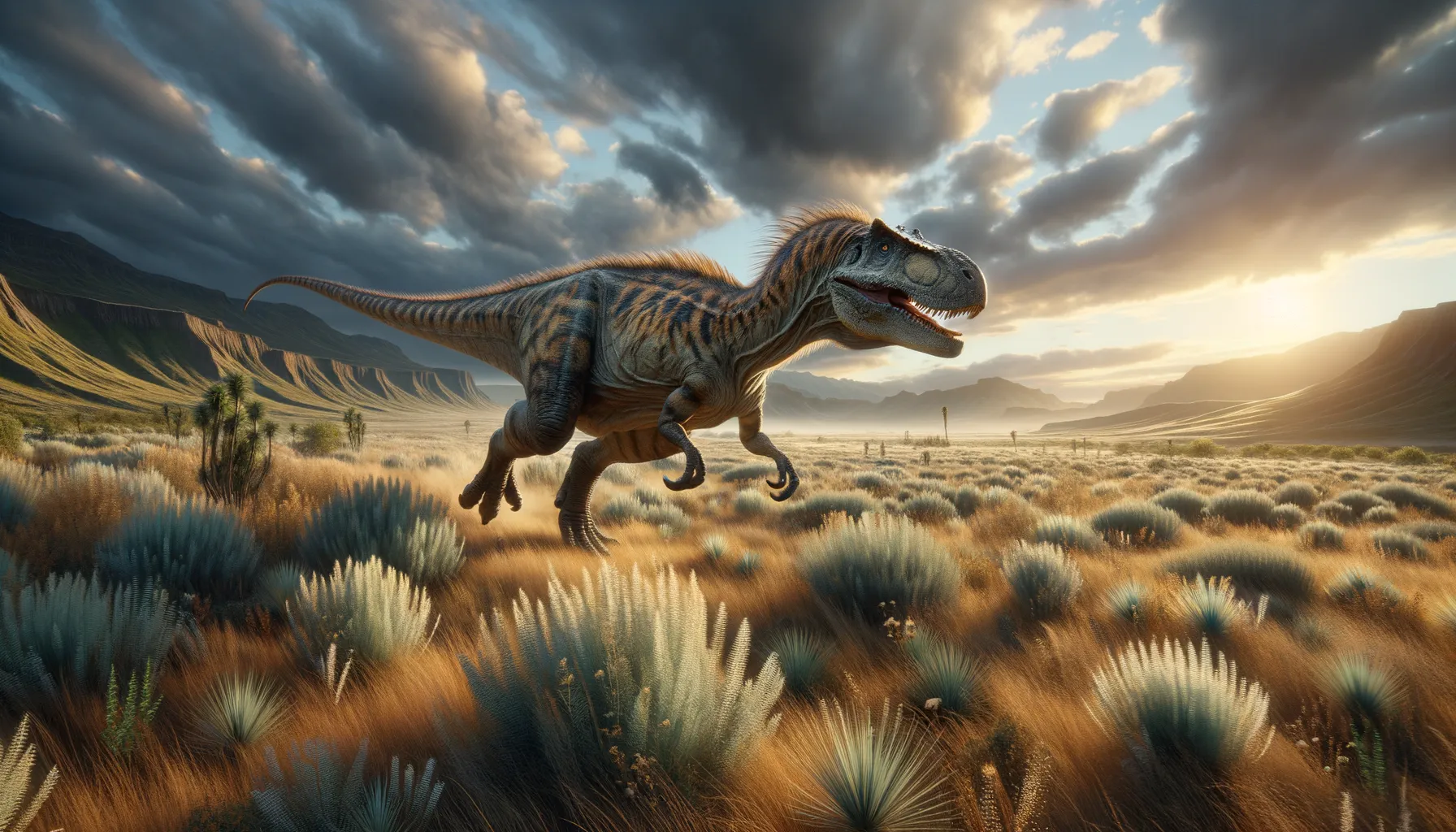
Hikanodon
Speed and strength meet prehistoric thriller.
Period
Cretaceous
Length
Hikanodon reached lengths of up to 30 feet.
Height
This dinosaur stood about 10 feet tall at the hips.
Weight
Hikanodon weighed approximately 2 tons.
Hikanodon was a formidable predator of the Cretaceous period known for its speed and agility. With a powerful build, it roamed the plains of western North America. Its keen senses made it an effective hunter, tracking and capturing prey with precision. This theropod's fossil discoveries have helped paleontologists understand the complexity of dinosaur ecosystems and predator-prey relationships during the late Cretaceous period.
Diet
Hikanodon was a carnivore, thriving on a diet of smaller dinosaurs and possibly scavenging when opportunities arose. Its sharp teeth and strong jaws made it an efficient predator, capable of taking down sizeable prey to sustain its energy needs.
Hunting
As a solo hunter, Hikanodon relied on its speed and stealth to ambush prey. It may have used pack tactics occasionally to corner larger herbivores, but primarily it depended on its keen senses to track and capture its next meal.
Environmental challenges
Hikanodon faced various environmental challenges, including competition for food with other large predators. Climate fluctuations during the Cretaceous could alter its hunting grounds, impacting food availability. Predators also had to adapt to landscape changes caused by tectonic activity. Such challenges tested its adaptability and survival strategies.
Speed
Hikanodon is often considered a fast runner, capable of reaching impressive speeds for its size.
Lifespan
Hikanodon likely had a lifespan ranging about 20 to 30 years in the wild.
First discovery
Hikanodon was first discovered in the late 20th century in the sedimentary layers of western North America.
Fun Facts
- Hikanodon was a herbivorous dinosaur that roamed the Earth during the late Jurassic period.
- This dinosaur got its name from its distinctive 'hika' leaf-shaped teeth used for grinding plants.
- Fossils of Hikanodon have been predominantly found in what is now the region of East Asia.
- Hikanodon was a medium-sized dinosaur, estimated to be around 20 feet in length.
- It is believed that Hikanodon traveled in herds for protection against predators.
- The dinosaur's large nasal cavity suggests that it might have had a highly developed sense of smell.
- Hikanodon's fossils have provided important insights into the dietary habits of plant-eating dinosaurs.
Growth and Development
Hikanodon underwent rapid growth during its early years, reaching near-adult size within a few years. Its development included a transition from juvenile features to more robust adult characteristics. This rapid maturation allowed young Hikanodons to become independent hunters more quickly, ensuring their survival.
Habitat
Hikanodon inhabited diverse environments, including floodplains and forested regions abundant in prey. These areas provided ample water sources and cover for stalking prey. Their habitat range extended over vast stretches, following herds to different regions as seasons changed.
Interaction with other species
Hikanodon interacted with various dinosaur species within its ecosystem, some as prey and others as competitors. It needed to balance coexistence and competition, particularly with other theropods. Cooperation, though rare, could occur among individuals when securing a large kill.
Natural lifespan
With a lifespan of up to 30 years, Hikanodon had ample time to establish itself as a top predator.
Reproduction
Hikanodon laid eggs in nests, which it might have guarded to some extent against threats. Though parental care was limited, hatchlings were precocial, capable of fending for themselves soon after birth. This independence helped ensure the continuity of the species.
Social behaviour
Hikanodon exhibited complex social behavior, potentially forming loose packs when it benefited their hunting success. Social hierarchies may have existed, with dominance based on size and strength. Such social structures supported strategic hunting and territorial competition.
Fossil locations
Hikanodon fossils have primarily been found in sedimentary deposits across western North America, indicating their range during the late Cretaceous. Notable finds have been made in sites with rich biodiversity, providing insight into their contemporaneous ecosystems. These fossils are critical for studies of predator-prey dynamics and paleoecology.
